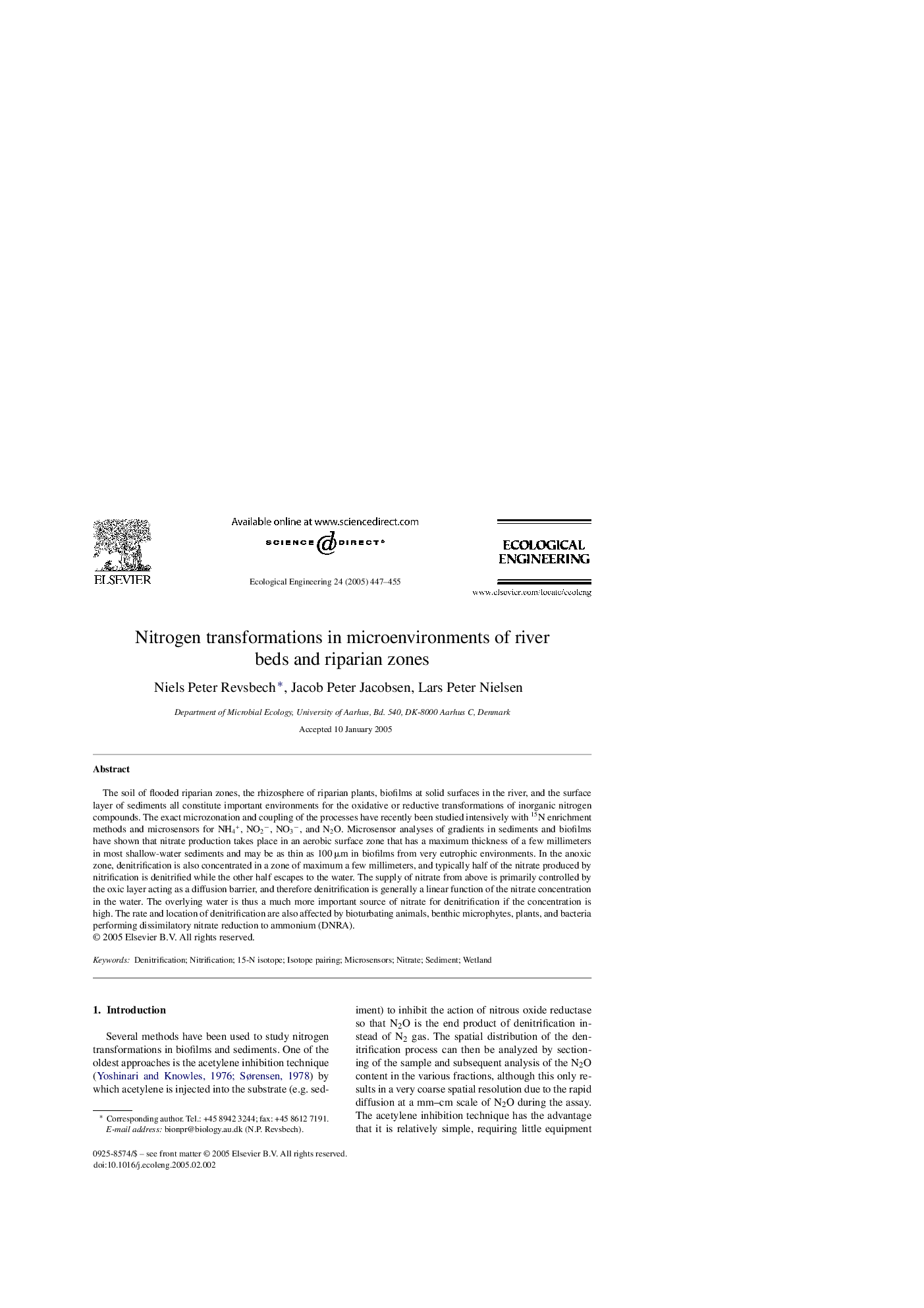| کد مقاله | کد نشریه | سال انتشار | مقاله انگلیسی | نسخه تمام متن |
|---|---|---|---|---|
| 9447532 | 1305244 | 2005 | 9 صفحه PDF | دانلود رایگان |
عنوان انگلیسی مقاله ISI
Nitrogen transformations in microenvironments of river beds and riparian zones
دانلود مقاله + سفارش ترجمه
دانلود مقاله ISI انگلیسی
رایگان برای ایرانیان
کلمات کلیدی
موضوعات مرتبط
علوم زیستی و بیوفناوری
علوم کشاورزی و بیولوژیک
بوم شناسی، تکامل، رفتار و سامانه شناسی
پیش نمایش صفحه اول مقاله

چکیده انگلیسی
The soil of flooded riparian zones, the rhizosphere of riparian plants, biofilms at solid surfaces in the river, and the surface layer of sediments all constitute important environments for the oxidative or reductive transformations of inorganic nitrogen compounds. The exact microzonation and coupling of the processes have recently been studied intensively with 15N enrichment methods and microsensors for NH4+, NO2â, NO3â, and N2O. Microsensor analyses of gradients in sediments and biofilms have shown that nitrate production takes place in an aerobic surface zone that has a maximum thickness of a few millimeters in most shallow-water sediments and may be as thin as 100 μm in biofilms from very eutrophic environments. In the anoxic zone, denitrification is also concentrated in a zone of maximum a few millimeters, and typically half of the nitrate produced by nitrification is denitrified while the other half escapes to the water. The supply of nitrate from above is primarily controlled by the oxic layer acting as a diffusion barrier, and therefore denitrification is generally a linear function of the nitrate concentration in the water. The overlying water is thus a much more important source of nitrate for denitrification if the concentration is high. The rate and location of denitrification are also affected by bioturbating animals, benthic microphytes, plants, and bacteria performing dissimilatory nitrate reduction to ammonium (DNRA).
ناشر
Database: Elsevier - ScienceDirect (ساینس دایرکت)
Journal: Ecological Engineering - Volume 24, Issue 5, 30 May 2005, Pages 447-455
Journal: Ecological Engineering - Volume 24, Issue 5, 30 May 2005, Pages 447-455
نویسندگان
Niels Peter Revsbech, Jacob Peter Jacobsen, Lars Peter Nielsen,